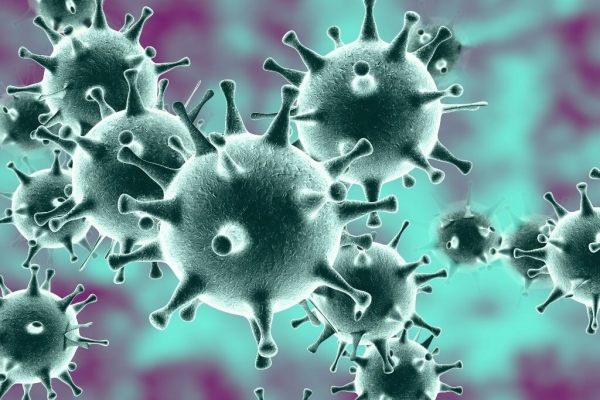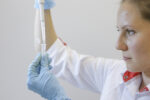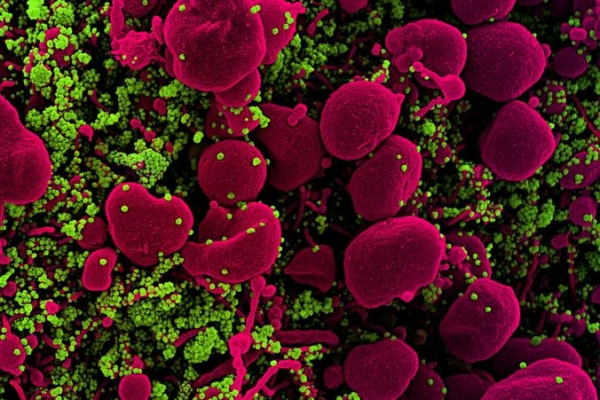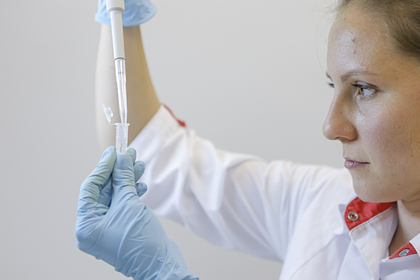
Outbreak of new coronavirus infection COVID-19 happened at the end of 2019, but that was only the beginning of the distribution of the unknown until the time of the disease. Further, the number of infected people began to grow very quickly, spreading to all corners of the planet.
What is the coronavirus?
Coronaviruses are a special group of RNA viruses that cause disease in animals and humans. They were first discovered in the 1960s and named for their shape resembling a crown.
Coronaviruses in humans are usually provided light for the treatment of the clinical picture with the symptoms, which it resembles a cold. But in some cases the infection can lead to serious medical complications and death.
In addition to the new coronavirus this group includes the SARS coronavirus, which first appeared in China in 2003, with a mortality rate of about 11%, and the coronavirus MERS, which was first discovered in Saudi Arabia in 2012, with a mortality rate of about 37%.
Current estimates indicate that the new coronavirus has a mortality rate of about 2%. But, despite the relatively low mortality rate compared to MERS and SARS, to date, the new coronavirus has caused more deaths than SARS and MERS together, probably due to greater coverage in one of the most densely populated countries in the world – China, where there was flash.
Where and how was first identified coronavirus COVID-19?
Suspected the emergence of a new coronavirus emerged after a fairly large number of patients were diagnosed with severe viral pneumonia during a short period of time in December 2019. This mass morbidity occurred in one place – in the city of Wuhan, located in China’s Hubei province. 9 January 2020 virologists successfully isolated and identified a new type of coronavirus, which with high probability have appeared in the local market. There was a special, traditional Chinese type of trading that is famous for selling seafood and objects of wildlife, such as insects, bats, rodents and other fauna, in a living form. According to Chinese customs potential buyers need to see the goods alive, before buying a wild animal or insect, and if they decide to buy it, the seller to kill and cut up the representative of the living world directly in front of those who paid the money. Because the market of this type there is a lot of dead carcasses of animals, which are processed before the customers (removal of fur and skin, cleansing of internal organs, etc.), they are the perfect place to spread viruses. In fact, a dangerous coronavirus SARS in 2003 that killed hundreds of people, also first appeared on the market.
How is coronavirus?
Information about how to apply the new coronavirus, based in large part on medical information on the transfer of previously studied similar viruses. Accordingly, to distinguish transmission from person to person, animal to person and by contact with surfaces where there are virus.
Transmission from person to person
Most often, the coronavirus is transmitted from an infected person to a healthy airborne droplets when coughing and sneezing. Possible transmission by kissing, even a simple conversation and stay within 2 meters from the carrier. Viruses can be inhaled into the lungs or get into the mucous membrane of the nose or throat, and thereby to cause infection in humans.
Transmission from contact with infected surfaces
Another method of transmission of coronavirus is in direct contact with surfaces or objects where the virus is already present, and the subsequent contact with the throat, nose or eyes. While it is not known how long the virus can survive outside of the host, but it is assumed that the time interval is from a few hours up to a maximum of several days, depending on temperature and humidity, type of surface and so on. Some preliminary studies suggest that the coronavirus on the surface of metals and tissues can live for up to 12 hours.
Transmission from animals to humans
One of the characteristics of coronaviruses is that they are zoonoses. They are often transferred and cause disease in animals, but in some cases, develop the ability to transmit from animals to humans.
What are the symptoms causes the infection with coronavirus COVID-19?
The incubation time of the novel coronavirus is not yet exactly determined, but it is believed that it ranges from 2 to 14 days.
The clinical picture of the disease can include a number of symptoms:
• increased body temperature;
• dry cough;
• dyspnea (shortness of breath);
• myalgia (muscle pain);
• fatigue;
• General malaise;
• pneumonia (inflammation of lungs);
• nauseam and vomiting;
• headache;
• hemoptysis (bloody cough);
• diarrhea.
What complications gives coronavirus infection?
Approximately 80% of patients the infection runs with mild clinical picture. But some people may experience a number of complications, and often, acute respiratory distress syndrome, that is life-threatening inflammatory lung damage. Studies have shown that the new coronavirus has the ability to bind with the specific receptor found in cells of the lungs. This allows the virus to penetrate the cells and to use their mechanisms and resources for reproduction. After some time, a host cell is destroyed for two reasons: either due to the depletion of cells by the virus or due to the fact that the immune system recognizes the virus and destroys it, attacking and killing the host cell. The disease causes fluid to accumulate in the small, elastic respiratory structures in the lungs called alveoli. This, in turn, violates the exchange of gases, that is, complicates or even makes impossible the passage of oxygen from the lungs into the bloodstream and then to other organs.
The new coronavirus is practically not affects children, only about 1% of infected juveniles in the same age group is practically non-existent complications.
Since there is still no specific treatment for disease caused by a novel coronavirus, in addition to symptomatic treatment, it is crucial that timely prevention. It is better to prevent any disease than to treat it – General rule of preservation of health for people around the world.









More Stories
Color wheel online
The Ministry of health has promised to disclose information about the vaccine trials from COVID-19
Called “atypical” symptoms of coronavirus